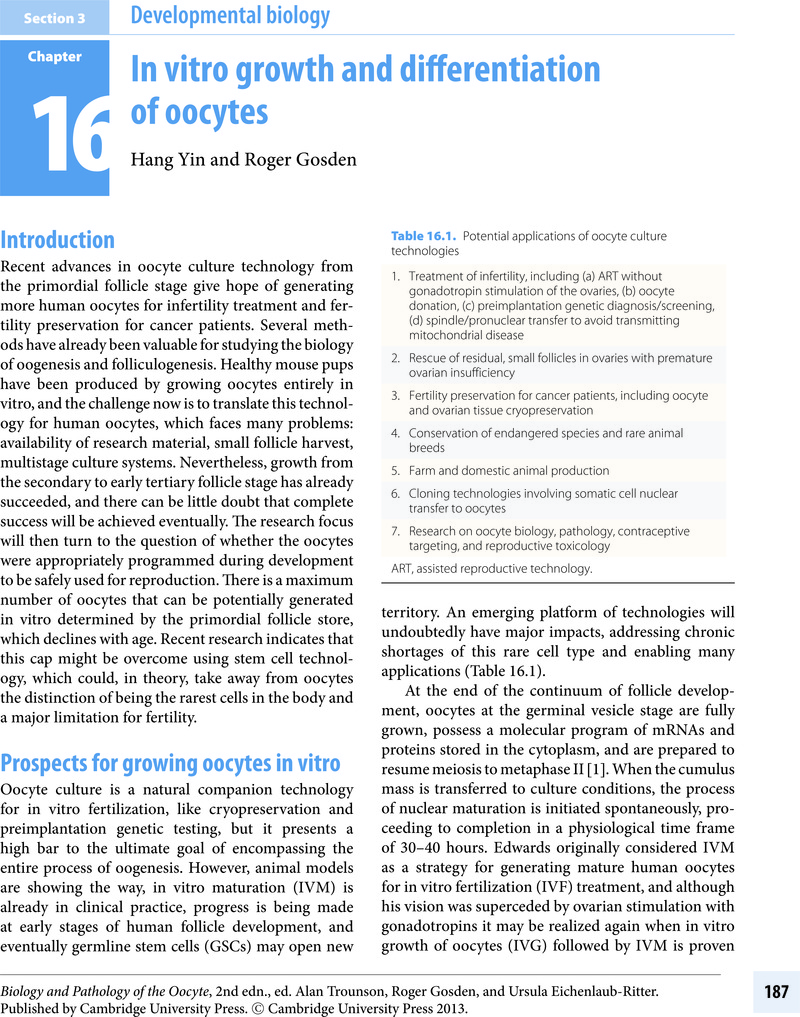Book contents
- Frontmatter
- Dedication
- Contents
- List of Contributors
- Preface
- Section 1 Historical perspective
- Section 2 Life cycle
- Section 3 Developmental biology
- 8 Structural basis for oocyte–granulosa cell interactions
- 9 Differential gene expression mediated by oocyte–granulosa cell communication
- 10 Hormones and growth factors in the regulation of oocyte maturation
- 11 Getting into and out of oocyte maturation
- 12 Chromosome behavior and spindle formation in mammalian oocytes
- 13 Transcription, accumulation, storage, recruitment, and degradation of maternal mRNA in mammalian oocytes
- 14 Setting the stage for fertilization: transcriptome and maternal factors
- 15 Egg activation: initiation and decoding of Ca2+ signaling
- 16 In vitro growth and differentiation of oocytes
- 17 Metabolism of the follicle and oocyte in vivo and in vitro
- 18 Improving oocyte maturation in vitro
- Section 4 Imprinting and reprogramming
- Section 5 Pathology
- Section 6 Technology and clinical medicine
- Index
- References
16 - In vitro growth and differentiation of oocytes
from Section 3 - Developmental biology
Published online by Cambridge University Press: 05 October 2013
- Frontmatter
- Dedication
- Contents
- List of Contributors
- Preface
- Section 1 Historical perspective
- Section 2 Life cycle
- Section 3 Developmental biology
- 8 Structural basis for oocyte–granulosa cell interactions
- 9 Differential gene expression mediated by oocyte–granulosa cell communication
- 10 Hormones and growth factors in the regulation of oocyte maturation
- 11 Getting into and out of oocyte maturation
- 12 Chromosome behavior and spindle formation in mammalian oocytes
- 13 Transcription, accumulation, storage, recruitment, and degradation of maternal mRNA in mammalian oocytes
- 14 Setting the stage for fertilization: transcriptome and maternal factors
- 15 Egg activation: initiation and decoding of Ca2+ signaling
- 16 In vitro growth and differentiation of oocytes
- 17 Metabolism of the follicle and oocyte in vivo and in vitro
- 18 Improving oocyte maturation in vitro
- Section 4 Imprinting and reprogramming
- Section 5 Pathology
- Section 6 Technology and clinical medicine
- Index
- References
Summary

- Type
- Chapter
- Information
- Biology and Pathology of the OocyteRole in Fertility, Medicine and Nuclear Reprograming, pp. 187 - 199Publisher: Cambridge University PressPrint publication year: 2013



